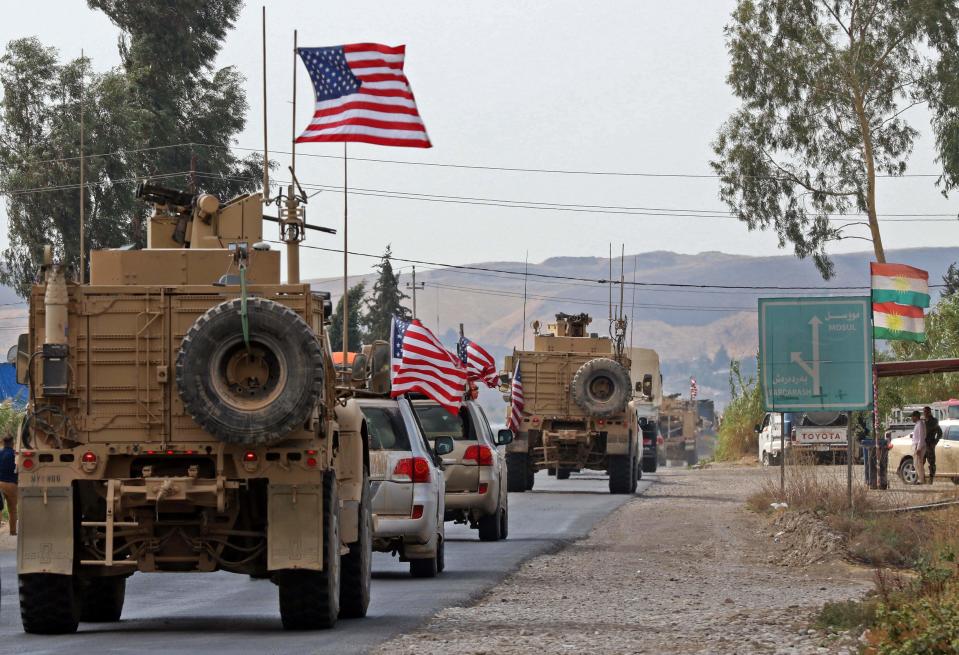Soldiers, Bradley armored vehicles in Kuwait eyed for deployment to Syria
WASHINGTON – The Pentagon is planning to send soldiers and Bradley armored vehicles based in Kuwait to guard Syrian oil fields from ISIS fighters, according to a U.S. official.
The deployment is in the planning stages and initially will involve less than a battalion of soldiers, the official, who is not authorized to speak publicly, said Friday. A battalion has about 400 soldiers.
Defense Secretary Mark Esper told reporters in Brussels on Friday that "mechanized forces" would be sent to northeastern Syria to defend oil fields, an apparent reference to Bradley Infantry Fighting Vehicles. Bradleys are armored vehicles that move on tracks like a tank. Each vehicle has a 25mm cannon and can fire missiles.
The military does not intend to send Abrams battle tanks to Syria, although that could change, the official said. It will take at least a week for the troops to arrive in the war-torn country.
The deployment of armor to Syria would represent a first in the fight against ISIS. The U.S.-led coalition had relied on airstrikes and local forces on the ground, mainly Kurdish fighters, to retake territory ISIS had seized in Iraq and Syria.
And it's a reversal of President Donald Trump's order earlier this month to withdraw forces from Syria. Trump had called for virtually all of the 1,000 U.S. troops there to be brought home.
Turkey, which considers the Kurdish fighters to be a terrorist force, quickly invaded northern Syria. U.S. lawmakers in both parties condemned Trump's decision as an abandonment of Kurdish allies in the fight against ISIS.
Trump later backtracked, saying a "small" contingent of forces would remain in the country.
Esper told reporters that the U.S. troops and armor are needed in Syria to ensure that ISIS cannot tap oil wealth and reconstitute itself.
'The U.S. has been sidelined': Turkey and Russia agree to joint patrols in Syria
"We want to make sure they don’t have access to the resources that may allow them to strike within the region, to strike Europe, to strike the United States," Esper said.
Trump had little choice but to send in reinforcements, said Michael O'Hanlon, a military analyst at the Brookings Institution, after Turkish and Russian forces rushed to fill the void left after the U.S. withdrawal.
"Trump is unwise to brag about supposed accomplishments in Syria," O'Hanlon said. "And he has done very badly there the last few weeks. But it is the land of bad options, and this may be among the least bad at this point."
But Nicholas Heras, an expert on Syria with the Center for a New American Security, said the decision to deploy armored forces is really aimed at Syria and Russia, which is there to bolster the regime of Bashar al-Assad.
Moving armed forces into Syria suggests that the U.S. military wants to prevent Russia and Assad's forces from taking the oil fields by force or the Kurdish fighters cutting a deal with them.
"Pure and simple," he said, "the Pentagon is making contingencies for a big fight with Russia for Syria's oil."
Poll results: Can our friends trust the US as an ally? Most Americans say Trump's Syria move has hurt

This article originally appeared on USA TODAY: Soldiers, Bradley armored vehicles eyed for duty in Syrian oil fields

